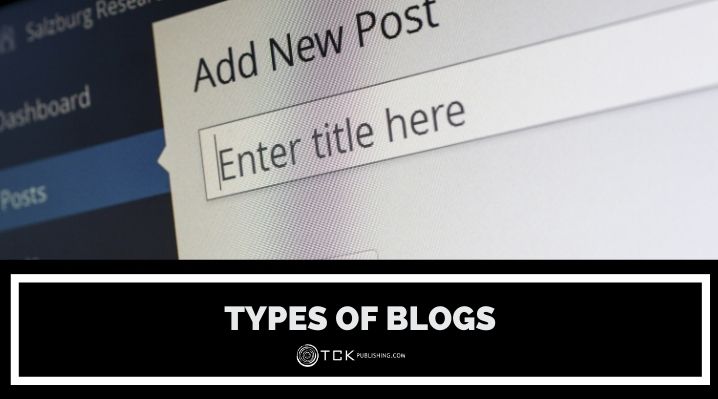
A blog is an informational website that publishes value-laden content on the World Wide Web. Since the establishment of the internet, it’s become a money-making venture that is still going strong despite many innovations in the digital landscape.
There are, of course, different types of blogs that have different purposes and cater to different niches. If you plan on starting a blog, deciding what type of blogger you want to be is the first major step you must take.
What is a Blog?
A blog (a shortened form of “weblog”) is a website where an individual or group of individuals regularly share their thoughts, experiences, and expertise. This is usually done through an article that is published on the site and is sometimes accompanied by other media formats such as images, video, and audio.
This format started as a hobby where you share personal reflections and connect with like-minded individuals. However, as the internet evolved, blogs began to establish themselves as knowledge bases for specific topics that range from general to specific.
And in its current form, blogging is no longer just about providing information, but also about earning money. There are different ways to monetize a blog such as advertising, sponsored content, affiliate marketing, subscription models, service provision, and selling digital products.
Types of Blogs
Blogs fall into different classifications in terms of audience, purpose, and content delivery. Here are some categories to consider.
Keep in mind that these types of blogs can blend into one another and it’s rare for one blog to be purely one type.
1. Personal Blog
A personal blog is the “classic” type of blog. It’s like an online diary that’s written by an individual instead of a group or corporation.
People who run personal blogs don’t care much about monetization and rarely use any strategies in creating their content. They look at their blogs as safe spaces where they can share their thoughts and write whatever they want to write at the moment.
Personal blogs don’t really have massive audiences. The vast majority simply cater to friends and family. However, personal bloggers can grow popular, receive sponsorships, and successfully launch their own brands.
Examples:
2. Collaborative Blog
A collaborative blog is where multiple authors contribute content and work together to maintain the site. Most blogs of this type are unified by one topic which the bloggers provide commentary on.
Contributors can take turns in writing posts, collaborate on a single article, or focus on other aspects of the blog. Because each person has different areas of expertise, interest, writing styles, and viewpoints, collaborative blogs have a multifaceted approach to their chosen topics.
This type is also one of the most informative as it leverages the collective knowledge and efforts of its contributors. This allows for more frequent posting, better technical and community upkeep, and more engaging content.
Example:
3. Corporate Blog
There are two types of corporate blogs: an internal blog only accessible to employees via the company’s intranet and an external blog that is used for marketing, public relations, and other purposes.
The first one is mainly to foster communication, culture, and community within the organization. Its goal is to be a place where employees can discuss issues, exchange information, and communicate with various departments and management levels.
The second is a publicly accessible blog that is used to announce new products and services, explain policies, interact with their audience, and respond to criticism. It also allows companies to express their voice and expertise by providing quality content. This gives them the ability to show authority in their niche and increases traffic to their site—in turn, enhancing conversion rates and profits.
Examples:
4. Niche Blog
Niche blogs focus on a specific topic, such as technology, food, or lifestyle. Or it can be much more specific, such as AI technology, Indian food, and nomadic lifestyles.
Most of these sites start out as passion projects that successfully transition into a thriving business. That passion, and the level of expertise that comes from it, is what makes niche bloggers stand out and hard to replicate.
Currently, some of the most popular niche blogs have something to do with fashion, finance, travel, health and fitness, politics, and DIY. There are countless niches out there to explore, but the best one will always be the one you want to write about.
Examples:
5. Reverse Blog
A reverse blog is characterized by its lack of a specific blogger. Instead, the public supplies the content, which is screened and published by the owner of the blog or a team of moderators.
People who contribute to a reverse blog are called guest bloggers or guest writers. For them, it’s an opportunity to publish a piece under their name and promote themselves on a different platform. Depending on the blog’s guidelines, posts can be limited to one or multiple topics.
For the blog, the goal is to attract guest bloggers who have authority in their respective niches. This lends credibility to the site, along with quality content. To further ensure quality, an approval system for comments is enforced, along with login forms to track users.
Examples:
6. Media Blog
A media blog is defined by the content it produces. A blog composed of videos is a vlog; one containing photos is a photoblog, another made up of links is a linklog, and so on.
There are plenty of other kinds of media blogs out there, though the vlog is currently the most popular. Thanks to video hosting sites like Youtube, the entry barrier for creating vlogs is quite low. Of course, growing your audience is a different and more complex beast.
Examples:
7. Microblog
A microblog is a blog that specializes in bite-sized content. Text is usually 300 words below and is often accompanied by other media such as images, videos, links, and audio.
Microblogs primarily exist within social media, especially on platforms like Twitter and Tumblr. The length of each microblog is dictated by the limitations set by each platform. For example, Twitter only allows a tweet to be a maximum of 280 characters.
Example:
Reasons to Blog
There are a lot of reasons why you should start blogging, though all of them boil down to the same reason—to share. Whether it’s for personal development, business, or showing your expertise, a blog is built on the premise of sharing.
You use it as a creative outlet to express your sense of self to the internet—and by extension, other people. You use it to teach others about something you’re passionate or knowledgeable about. And you use it as a tool for career growth through networking, brand development, and building an online presence.
However, a blog requires time, effort, and consistency to succeed. You need to choose a topic that genuinely interests you and aligns with your expertise. This makes it easier for you to consistently put out quality content and convince your audience that you’re worth spending their time on.
What type of blog do you have or plan on making? Share it in the comments below!
If you enjoyed this post, then you might also like:
- 14 Types of Blog Posts and Tips for Writing Them
- Your Ultimate Guest Posting Guide: Benefits and Tips for Writing Guest Blogs
- 20 Writing Blogs You Should Follow to Grow Your Skills
- How to Promote Your Blog: 10 Strategies for Boosting Your Traffic

Cole is a blog writer and aspiring novelist. He has a degree in Communications and is an advocate of media and information literacy and responsible media practices. Aside from his interest in technology, crafts, and food, he’s also your typical science fiction and fantasy junkie, spending most of his free time reading through an ever-growing to-be-read list. It’s either that or procrastinating over actually writing his book. Wish him luck!
